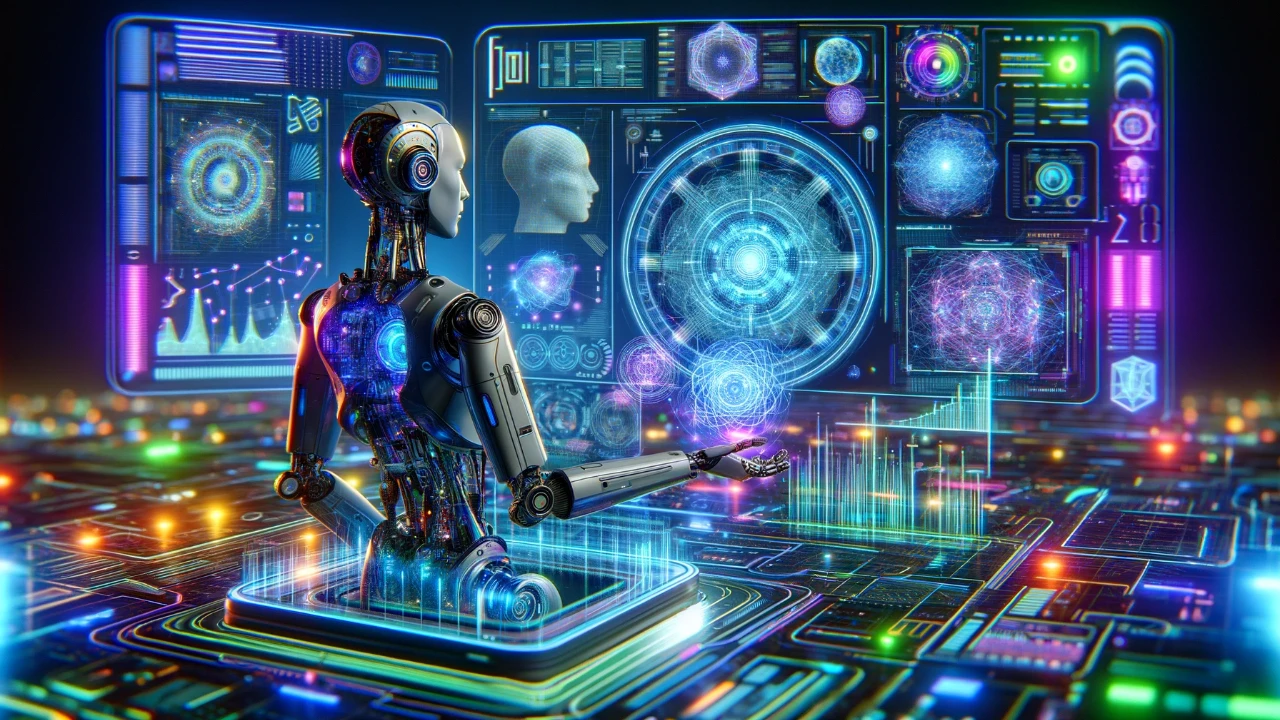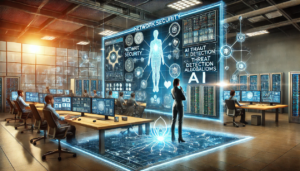The Power of AI and No Code SaaS in Building Profitable Software Businesses
In the rapidly evolving world of technology, AI and No Code SaaS have emerged as game-changers, empowering entrepreneurs and businesses to create wealth and revolutionize industries. From Alex Becker to Iman Gadzhi, Sam Evans, and even Alex Hormozi, who recently sold his SaaS company for a staggering $60 million, the potential for success in this field is undeniable.
In this article, we will explore three ways AI and No Code SaaS can make you rich in 2024. But first, let’s understand why software is considered the best business model.
We strongly recommend that you check out our guide on how to take advantage of AI in today’s passive income economy.
Table of Contents
Why Software is the Best Business Model
Software is renowned for its high leverage, meaning you can create an app once and sell it infinitely without incurring additional costs. This scalability, combined with the potential for monthly recurring revenue (MRR), makes SaaS companies incredibly valuable.
Imagine having just 100 customers paying you $50 per month. That’s $5,000 in MRR, or $60,000 annually. With typical multiples of 5-10x for SaaS companies, you now have a $300,000 asset that you can sell at any time.
The Rise of No Code Software Builders
Traditionally, building software required extensive technical knowledge and significant financial investments. However, the emergence of no code software builders like Bubble has democratized the process, allowing non-technical individuals to create fully functional apps without writing a single line of code.
Bubble, often compared to Shopify for software development, provides pre-made templates and drag-and-drop features, enabling anyone to build complex applications like Airbnb or Uber. This accessibility has opened up a world of opportunities for entrepreneurs to create the best business model without the barriers that once existed.
Three Ways AI and No Code SaaS Will Make You Rich in 2023
1. Building Your Own AI-Powered SaaS
One of the most exciting aspects of AI and No Code SaaS is the ability to create your own AI-powered software. By integrating tools like OpenAI’s GPT-4 API into Bubble, you can harness the power of advanced AI to enhance your application’s functionality.
Take Tweet Hunter, for example. This company recently sold for millions of dollars after just one year in business. Their software uses the GPT-4 API to analyze a user’s tweets and generate new, potentially viral tweets that match their style.
To build a similar AI-powered SaaS, you simply need to find a specific niche use case and develop a software product around it using Bubble. With the right marketing strategy, you could be on your way to a multi-million dollar exit in a matter of months.
2. Creating Internal SaaS Platforms for Businesses
Another lucrative opportunity lies in creating internal SaaS platforms for businesses. Many companies use multiple software tools to manage projects, sales, and customer support, often leading to communication gaps and inefficiencies.
By leveraging AI and No Code SaaS tools like Bubble and Make.com, you can create unified dashboards that integrate various software APIs, providing businesses with a centralized platform to manage their operations.
Imagine a dashboard that combines project management (Trello), CRM (Salesforce), and customer support (Zendesk) into a single, user-friendly interface. With automated workflows and real-time analytics, businesses can streamline their processes, make data-driven decisions, and ultimately scale their operations.
As an entrepreneur, you can start an automated systems agency, specializing in creating custom CRM dashboards for specific industries. By charging tens of thousands of dollars per client, you can build a highly profitable business while helping companies optimize their workflows.
3. Advanced AI Automation for B2B SaaS
The third way to capitalize on AI and No Code SaaS is through advanced AI automation for B2B SaaS. By combining the power of AI with the flexibility of no code platforms, you can create highly sophisticated software solutions tailored to specific industries.
For example, a real estate company using nine different software tools can benefit immensely from a unified dashboard that integrates all their systems. By developing a custom solution using Bubble and Make.com, you can help them save time, increase efficiency, and ultimately boost their bottom line.
Once you have created and refined this software for one company, you can then sell it to other businesses in the same industry. By charging thousands of dollars per month for your B2B SaaS solution, you can generate substantial revenue while providing immense value to your clients.
The Future of AI and No Code SaaS
As technology continues to evolve, the potential for AI and No Code SaaS to transform businesses and create wealth is limitless. By mastering these skills now, you can position yourself at the forefront of this revolutionary shift.
Whether you choose to build your own AI-powered SaaS, create internal platforms for businesses, or develop advanced AI automation solutions, the opportunities are vast. With the right mindset, skills, and determination, you can leverage AI and No Code SaaS to achieve financial success in 2023 and beyond.
Embracing the No Code Revolution
The beauty of no code platforms like Bubble is that they democratize software development, making it accessible to anyone with an idea and the drive to bring it to life. By learning this skill, you can future-proof your career and ensure that you never struggle to make money again.
Even if your first software idea doesn’t take off, the skills you acquire in the process will be invaluable. As businesses increasingly seek custom software solutions, your ability to build applications quickly and efficiently will make you an in-demand asset.
Conclusion
In conclusion, AI and No Code SaaS are transforming the business landscape, creating unprecedented opportunities for entrepreneurs and businesses alike. By leveraging these powerful tools, you can build profitable software businesses, streamline operations, and create wealth in ways that were once unimaginable.
As you embark on your journey to harness the power of AI and No Code SaaS, remember that success lies in continuous learning, adaptation, and perseverance. Embrace the challenges, stay curious, and never stop exploring the limitless potential of these revolutionary technologies.
The future belongs to those who dare to innovate, and with AI and No Code SaaS at your fingertips, you have the tools to shape that future. So go forth, build, and create the software that will transform industries and create wealth in 2024 and beyond.
FAQs:
Can you build SaaS without coding?
Yes, it is possible to build a SaaS (Software as a Service) application without coding. No code platforms like Bubble have revolutionized the way software is developed, allowing non-technical individuals to create fully functional applications using visual, drag-and-drop interfaces.
With Bubble, you can build complex SaaS applications without writing a single line of code. The platform provides pre-built templates, customizable design elements, and powerful integrations, enabling you to create sophisticated software solutions without the need for traditional programming skills.
Can I make AI without coding?
Yes, you can create AI-powered applications without coding. No code platforms like Bubble, when combined with AI APIs such as OpenAI’s GPT-4, allow you to integrate artificial intelligence capabilities into your software without the need for extensive coding knowledge.
By leveraging the power of AI APIs, you can enhance your SaaS application with features like natural language processing, machine learning, and predictive analytics. Tools like Make.com enable you to connect various AI services and APIs to your Bubble application, creating seamless AI-driven workflows and functionalities.
Does SaaS require coding?
Traditionally, building a SaaS application required significant coding skills. Developers needed to be proficient in programming languages like JavaScript, Python, or Ruby to create the backend infrastructure, front-end interfaces, and database management systems.
However, with the advent of no code platforms like Bubble, the requirement for coding has been greatly reduced. These platforms provide visual, intuitive tools that allow you to build SaaS applications without the need for extensive coding knowledge.
While coding skills can still be beneficial for customizing and optimizing your SaaS application, no code platforms have made it possible for entrepreneurs and businesses to create powerful software solutions without relying heavily on programming expertise.
Does SaaS use AI?
Yes, many SaaS applications incorporate AI technologies to enhance their functionality and provide more intelligent, personalized experiences for users. AI can be integrated into SaaS solutions in various ways, such as:
- Chatbots and virtual assistants: AI-powered chatbots can provide instant customer support, answer frequently asked questions, and guide users through the application.
- Predictive analytics: AI algorithms can analyze user behavior and data to provide predictive insights, such as identifying potential churn risks or recommending personalized content.
- Automation: AI can automate repetitive tasks, such as data entry, lead qualification, or email categorization, saving time and increasing efficiency.
- Sentiment analysis: AI-driven sentiment analysis can help SaaS applications understand user feedback, monitor brand reputation, and identify areas for improvement.
By leveraging AI technologies, SaaS applications can become more intelligent, efficient, and user-friendly, providing businesses with powerful tools to streamline their operations and deliver exceptional customer experiences.

We strongly recommend that you check out our guide on how to take advantage of AI in today’s passive income economy.




